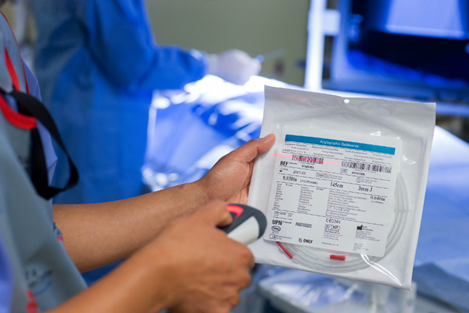As the importance of the supply chain in improving the health care system continues to increase, so too does its complexity. The supply chain role is expanding across all hospital functions, ranging from the C-suite to engineers, and it now requires industry-wide efforts to reduce costs and maximize system effectiveness. This makes it essential for supply chain leaders to find innovative ways to add value – for the organization and for the patients.
What does innovation look like in the hospital supply chain?
First, it requires technical expertise. Supply chain leaders should be knowledgeable about the capabilities of various technologies in order to fully maximize efficiency. New technology makes it possible for supply chain leaders to transform vast amounts of data into value-added activities while eliminating efforts that do not add value. The healthcare supply chain presents a gold mine for data and analytics, which can be utilized to simplify processes, support patient safety, and remove excess inventory, waste, and related costs. Technologies that deliver data and automate processes across the product lifecycle – from receipt, to storage, to use, to reorder – enable even greater actionable insights through end-to-end supply visibility. As a result, physicians can use this information to drive standardization and reduce the overall cost of care. Another benefit of automation is the ability to save time. Clinical stakeholders no longer have to spend as much time on supply chain activities, and can instead spend more time providing bedside patient care. Supply chain leaders at a cardiac facility in Florida made this a reality – a change in strategy that ultimately saved them $5 million.1 They utilized radio frequency identification (RFID) to automate tracking, monitor supplies, and foster more informed decision-making.

In addition to technical expertise, supply chain leaders should demonstrate ingenuity and adaptability to encourage innovation. As new automated technologies and cloud-based analytics continue to develop, leaders should strive to be proactive and continuously seek new sources of optimization. By thinking outside of the box, supply chain improvements can help drive down the total cost of care in the long run.
Lastly, innovation requires efficiency. Supply chain leaders should adopt the Lean philosophy in order to make the most of existing resources and facilitate the transition to outcome-based care. Scott Nelson, senior vice president of Supply Chain at Cardinal Health, explains “Lean thinking creates better flow across the supply chain, improves lead time, and reduces variability. Supply chain leaders can use Lean principles to unlock value within hospital systems and provide predictable, consistent, cost-effective, high-quality care.”
Overall, leaders who provide an innovative approach to supply chain management can help to drive transformation and reap long term benefits. Stay tuned for future tips about how to take your supply chain to the next level.
_______________________________
1Cardiovascular Business Magazine. (3/15) “Cath Lab Inventory Management: Improving the Bottom Line”

